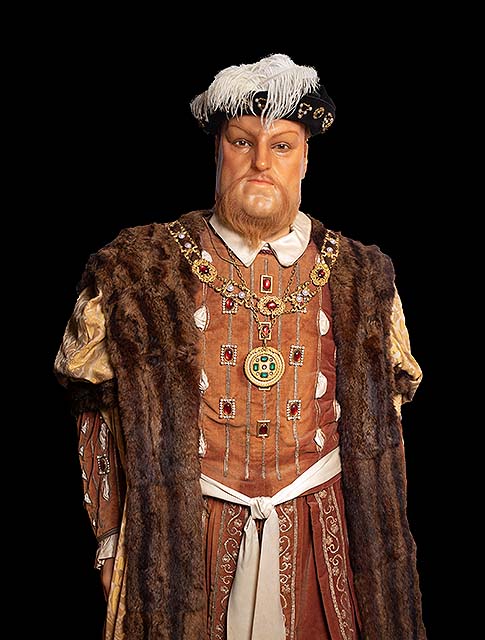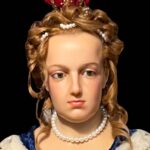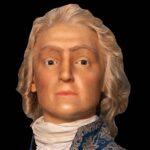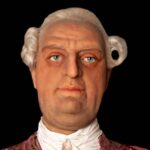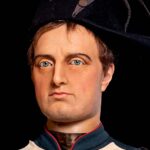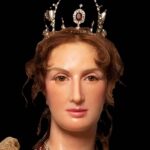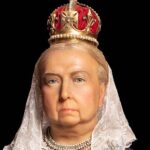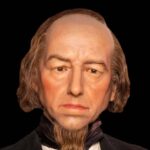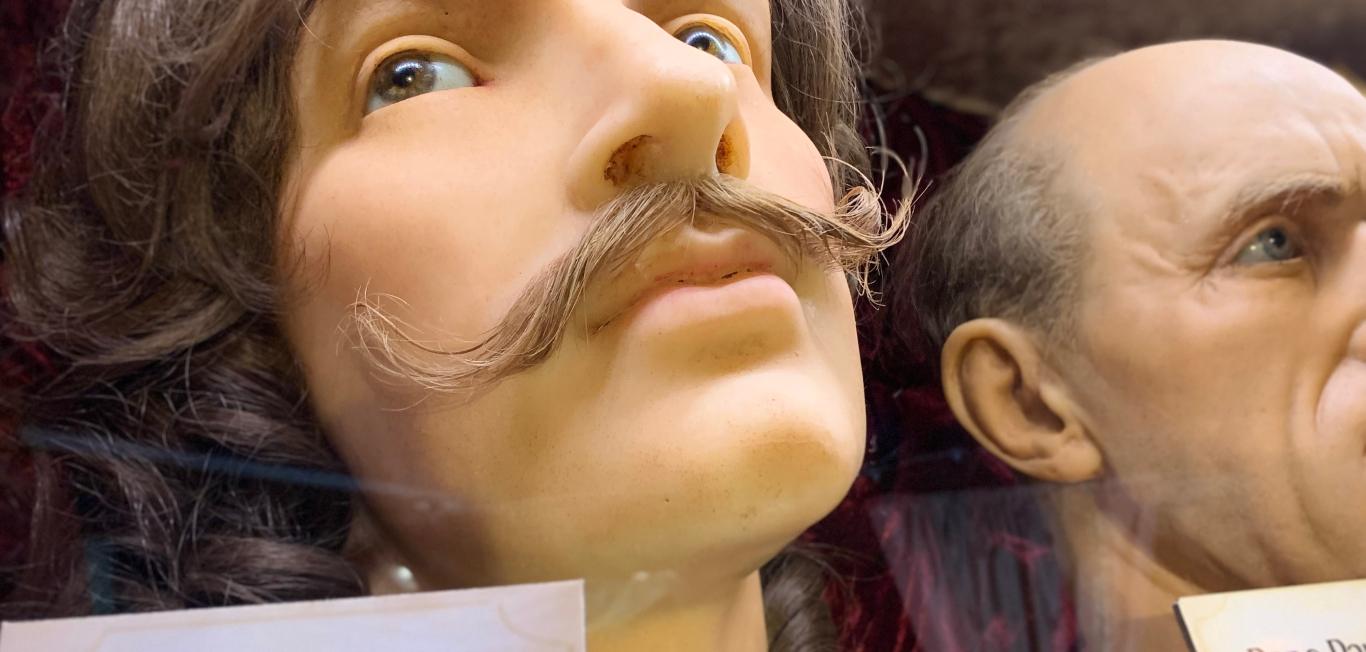About Henry VIII
King Henry VIII was one of the most notorious monarchs, who ruled England from 1509 to 1547. He is known for his effective reign as much as his turbulent personal life. Henry VIII spent much of his life on a quest to conceive a male heir to secure the continuation of the Tudor dynasty, which led to six marriages and his eventual separation from the Roman Catholic Church. Throughout his reign, he improved the Royal Navy, had three legitimate heirs, and feuded with the powers of religion and politics. The biography of King Henry VIII explores the more intricate details of his 55 years of life and 38 years as England’s king.
Early Years
Henry VIII’s biography begins on June 28, 1491, at the Palace of Placentia in Greenwich. He was the second son of King Henry VII and Elizabeth of York, which meant his early life was filled with privilege, titles, and responsibilities. His accomplishments in the face of adversity foreshadowed his reign as one of England’s most notable monarchs. Although he was not the next in line to the throne, Henry VIII still received the education of a royal heir, in addition to his appointments.
By the age of two, Henry VIII received his first appointment: Constable of Dover Castle and Lord Warden of the Cinque Ports. His first titles reflected his royal lineage as the son of King Henry VII. His prompt designations to positions of authority hinted at his destiny.
DID YOU KNOW?
By the age of two, Henry VIII received his first appointment: Constable of Dover Castle and Lord Warden of the Cinque Ports.
In 1494, Henry turned three and accumulated more titles and responsibilities. His new role was Earl Marshal of England and Lord Lieutenant of Ireland. His rise through the ranks of the English nobility continued, and he was shortly named a Knight of Bath.
In May 1495, at the age of four, Henry was appointed to the prestigious Order of the Garter, an order reserved only for the highest-ranking knights in England. His promotion to this role continued to show his importance to the kingdom.
At the age of 10, Henry’s life took a significant turn when his older brother, Arthur, passed away in 1502. Subsequently, Henry became the new Duke of Cornwall, and in February 1504, he assumed the titles Prince of Wales and Earl of Chester. The appointment of these titles solidified his future as king of England.
Personal Life
King Henry VIII’s personal life was thought to be a great cause of strain throughout his reign. During his lifetime, he had six wives, which is one of the most well-known facts about King Henry VIII. His marriages to Catherine of Aragon, Anne Boleyn, Jane Seymour, Anne of Cleves, Catherine Howard, and Catherine Parr are legendary individually. Each marriage had a far-reaching effect on England’s religious and political landscape.
Although King Henry VIII is known for his six wives, the wives are known for how their lives ended. There is an old English nursery rhyme that has been said through the centuries about them:
“Divorced, beheaded, died, divorced, beheaded, survived.”
He had three children. Mary was from his first marriage to Catharine of Aragon, Elizabeth was from his second marriage to Anne Boleyn, and Edward was from his third marriage to Jane Seymour. The three heirs each ascended to the English throne and would be known in history as Edward VI, Mary I, and Elizabeth I. They all played pivotal roles in shaping European history and carrying the legacy of King Henry VIII.
Interesting Facts About Henry VIII
One of the most well-known facts about Henry VIII is that he had six wives.
Henry VIII established the Church of England so that he could divorce Catherine of Aragon and marry Anne Boleyn.
King Henry VIII increased the size of the Royal Navy by tenfold as a strategic move for England’s future dominance.
King Henry VIII established Deptford and Woolwich as royal dockyards to reinforce England’s naval capabilities.
Greenwich Palace had great significance to King Henry VIII, as it was his birthplace, the venue for two of his marriages, and the location of the births of his daughters, Mary and Elizabeth.
King Henry VIII only had three legitimate children: Edward VI, Mary I, and Elizabeth I. All three children ascended to the throne.
Henry’s flagship, the Mary Rose, launched in 1511 as a warship.
King Henry VIII is the only English monarch to have ruled parts of modern-day Belgium.
What Henry VIII is Most Known for
King Henry VIII left an indelible mark on the annals of European history. He made radical changes throughout his reign, and most of them were influenced by his personal life.
Six Marriages: One of the most well-known facts about King Henry VIII is his six marriages. He spent most of his life in pursuit of a male heir, which led to his numerous marriages and the establishment of the Church of England, which he led as Supreme Head.
DID YOU KNOW?
Henry VIII spent most of his life in pursuit of a male heir.
Legendary Appetite: King Henry VIII enjoyed extravagant feasts and banquets, which were one of the contributors to his heavy weight.
Radical Changes to the Constitution: One of the most prominent changes King Henry VIII made in England was the establishment of the Church of England. His split from the Roman Catholic Church was influenced by his desire to divorce his first wife, Catharine of Aragon, to marry Anne Boleyn. This event caused a shift in the religious and political dynamics in England, as he established the Church of England and saw that the monarchy had superiority over the church.
Tudor Monarchy: The Tudor monarchy is an infamous period in English history. Henry VIII reigned from 1509 to 1547, transforming England’s future through his personal life, as well as military strategies to remain dominant.
Producing a Male Heir: Much of Henry VIII’s life as king was a quest for a male heir. King Henry’s third marriage to Jane Seymour brought him his heir, Edward VI. The birth of Edward VI secured the Tudors’ claim to the throne.
Reign of King Henry VIII
King Henry VIII’s reign demonstrates the complexity of his rule, marked by political and military strategy, religious transformation, personal desires, and his imprint on England’s history. There are five events that stand out from King Henry VIII’s monarchy.
1. 1520: King Henry VIII’s meeting with King Francis I of France at the Field of the Cloth of Gold was one of the most opulent events during Henry VIII’s reign. The purpose of this encounter was to strengthen England’s alliance with France.
2. 1527-1533: Some historians would say that King Henry VIII’s divorce from Catherine of Aragon was one of the most momentous events of his reign, as it caused conflict with the Roman Catholic Church. In order to accomplish his annulment to marry Anne Boleyn, King Henry VIII split from the Catholic Church and established the Church of England.
3. 1536: King Henry VIII’s religious reforms caused a rebellion due to the dissolution of monasteries. The Pilgrimage of Grace was formed and challenged his authority on religious policies.
4. 1536-1541: In order to further disassemble the power and influence of the Catholic Church, King Henry VIII closed and dissolved monasteries and confiscated their estates, rendering them powerless.
5. 1536: King Henry VIII’s marriage to his third wife, Jane Seymour, produced a male heir, Edward VI. Although Jane died shortly after childbirth, having a son protected Henry VIII’s legacy and the Tudors continued to rule the monarchy.
How Henry VIII Lived Out the Remainder of His Life
King Henry VIII of England died at the age of 55 on January 28, 1547, at Whitehall Palace. His final days were busy preparing for his departure. The day before his death, he met with his confessor and received Holy Communion. Nine days before his death, he ordered the execution of Henry Howard, Earl of Surrey, which left many people in the king’s inner circle questioning if this act had weighed heavy on his conscience and influenced him to seek forgiveness and solace in his religion. It is said that two hours before his death, on January 28, 1547, at two o’clock in the morning, King Henry VIII gave his final speech. He left behind an intricate legacy and an everlasting mark in the annals of English history. His cause of death is unknown, but there is no shortage of theories, as he had a range of health complications. King Henry VIII wanted to be buried in a tomb that would surpass any other king’s. Unfortunately, this tomb was never completed. He instead rests underneath a black marble slab in St. George’s Chapel at Windsor Castle.
FAQs
During which years did Henry VIII rule as king?
Henry VIII ruled as King of England from April 21, 1509, to his death on January 28, 1547.
What health issues did Henry VIII experience
Henry VIII of England experienced a range of health issues during his lifetime, some of which included obesity, jousting injuries, cardiovascular issues, and potentially syphilis.
How would you describe Henry VIII’s early life?
Henry VIII’s early life was characterized by privilege, opulence, and power. He received an exceptional educational foundation from his tutor, John Skelton, and he had royal responsibilities as the second son of the reigning monarch.
What was the age difference between Henry VIII and his wives?
Catherine of Aragon was six years older than Henry, Anne Bolyen was 8-10 years younger, Jane Seymour was three years younger, Anne of Cleves was 24 years younger, Catherine Howard was 28 years younger, and Catherine Parr was 21 years younger.
